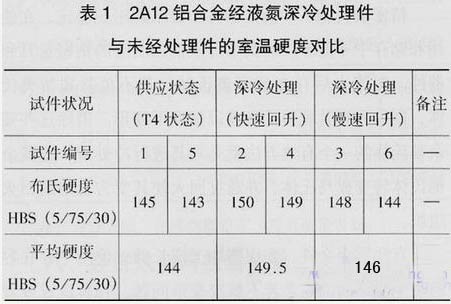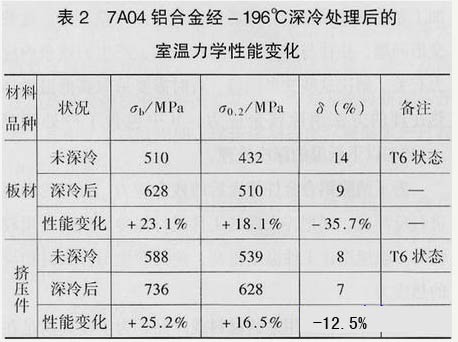4. Mechanical properties of aluminum alloy parts after cryogenic treatment
Our company found that the material of the cryotreated aluminum alloy was harder than the material of the same part that was not cold treated. It was later discovered that this phenomenon does not only occur in one part, one kind of material, but is universal. Therefore, we took one of the 2A12 grade T4 aluminum alloy parts for hardness comparison. The results are shown in Table 1. It can be seen from Table 1 that the hardness of the 2A12-T4 aluminum alloy parts after the deep cooling treatment is indeed improved.

Table 2 is the data compiled according to the data. It can be seen from Table 2 that the strength of the 7A04 aluminum alloy after deep cooling at -196 ° C will be significantly improved.

It can be seen that the use of liquid nitrogen for cryogenic treatment of aluminum alloy parts at -196 ° C is one of the effective ways to further improve the material strength.
5. Other applications of liquid nitrogen in heat treatment of materials
Liquid nitrogen can also be used as a quenching medium for ultra-low temperature quenching. Since the cooling rate of liquid nitrogen is 5 times larger than that of water, the latent heat of vaporization of liquid nitrogen is 1/11 of water, so the workpiece is surrounded by gas immediately after quenching, and the possibility of quenching deformation and quenching is small. After the steel is quenched in liquid nitrogen, the amount of retained austenite is extremely small, which allows it to achieve higher hardness and dimensional stability. However, since liquid nitrogen is easily volatilized, the consumption is large, and the production cost is high, so the application is currently less.
In addition, electron microscopy is a large-scale instrument for observing and studying materials and analyzing the quality of heat treatment. Liquid nitrogen is an auxiliary material required for electron microscopy.
Sixth, the safety of liquid nitrogen use
Although liquid nitrogen is a non-flammable substance, safety must also be taken into account when using, transporting and storing liquid nitrogen. For example, do not touch the liquid nitrogen directly with your hands, and take care to prevent liquid nitrogen from splashing on your body to prevent frostbite; use liquid nitrogen in a ventilated place to prevent nitrogen from suffocating; do not pack liquid nitrogen when shipping liquid nitrogen. Strict, in case of physical explosions and so on.
Conclusion
Liquid nitrogen is one of the sources of nitrogen required for vacuum heat treatment, and it is a safer and more economical refrigerant for cryogenic treatment of materials. Vacuum heat treatment has broad development prospects; and the cryogenic treatment of materials, whether in stabilizing material organization, preventing product deformation, or exploring further improving material properties, is more worthy of research and application. Therefore, the application of liquid nitrogen in materials and heat treatment also has broad prospects.
Previous page
Radiator Fan Blade,3 Leaves Plastic Fan Blades,Reinforced Nylon Fan Blades,Radiator Fan Impeller
Changzhou Keyleader Fan Technology Co. Ltd. , https://www.keyleaderfan.com